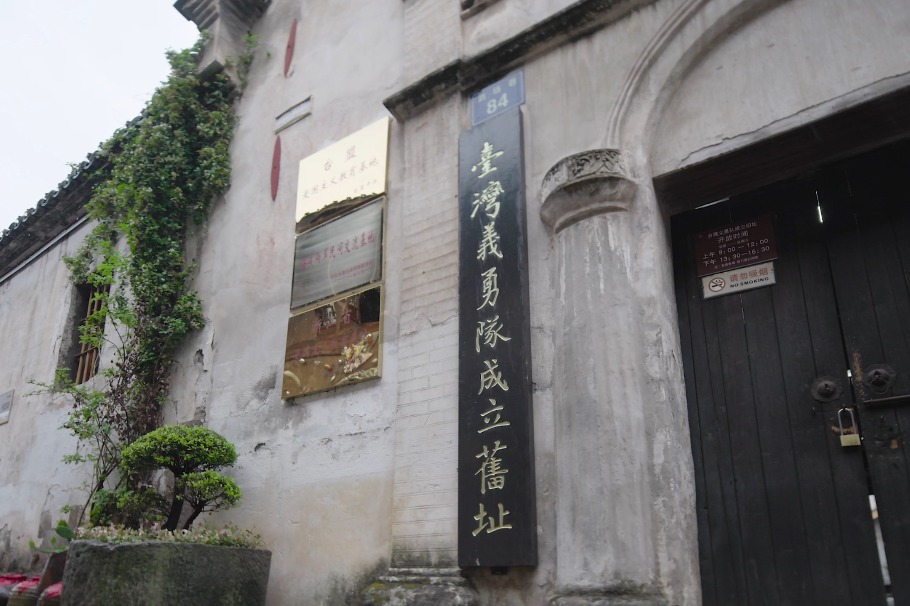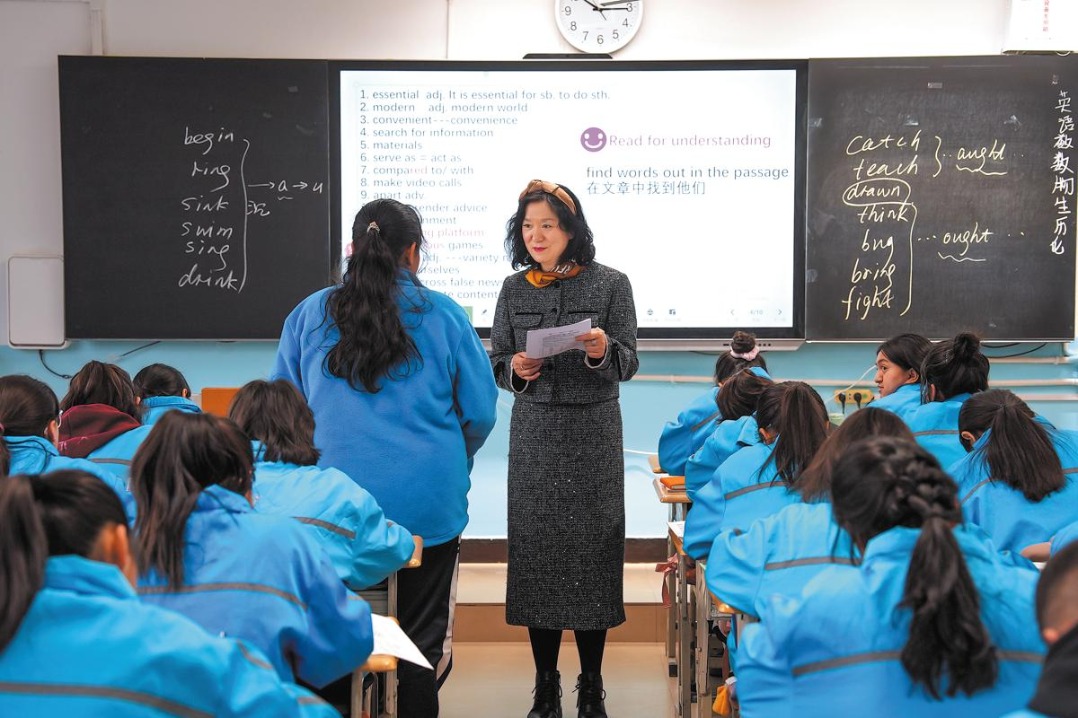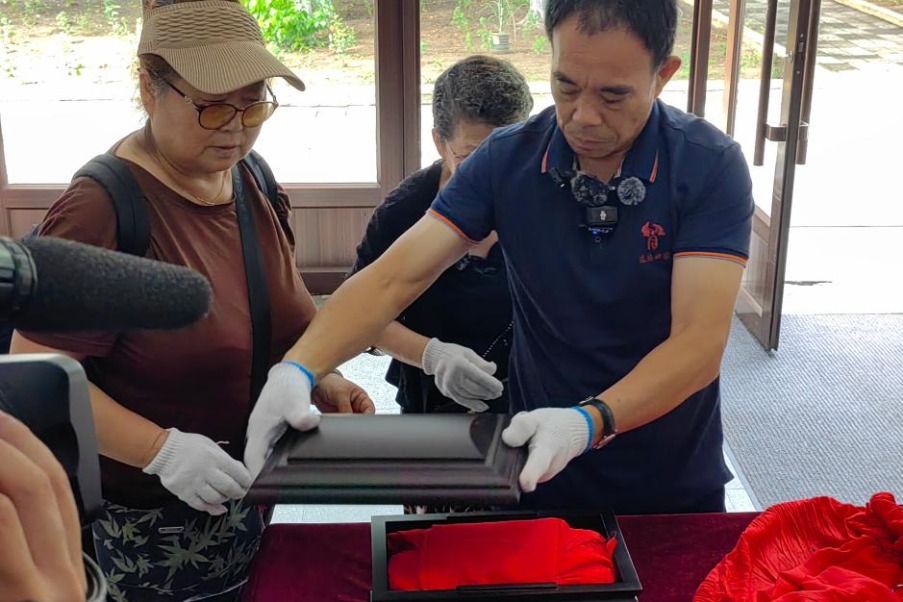Xinjiang gets big boost from pairing strategy
Expertise, resources channeled to assist region's socioeconomic development

The Mendong grocery store in Turpan, Xinjiang Uygur autonomous region, derives its name from two villages more than 3,000 kilometers apart. Men refers to Xinchengximen village, where the grocery store is located, while dong stands for Shibadong, a once impoverished village in Central China's Hunan province.
The two villages became close partners in September 2020, marking a new bond forged within the framework of China's paired assistance program for Xinjiang.
Since then, Shibadong has shared its poverty alleviation experiences with Xinchengximen, helping it to tap deeper into local resources to advance rural vitalization, such as building a pigeon farming cooperative, a pigeon incubation base and an e-commerce livestreaming base.
These efforts have paid off, as raising pigeons, for example, has diversified local residents' income sources, with each household earning additional income of 6,000 to 7,000 yuan ($840 to $985) per year.
The cross-regional partnership is a microcosm of the nationwide program of paired assistance to Xinjiang. The program, launched in 1997, now involves 19 provinces and municipalities in the country's more developed regions, as well as some central government departments and State-owned enterprises, channeling expertise and resources to help drive Xinjiang's socioeconomic development.
Long-term commitment
Since 2012, the central government has allocated more than 200 billion yuan in paired assistance funding for Xinjiang, secured 3 trillion yuan in investments for economic cooperation projects, and introduced more than 15,000 enterprises into the region, helping Xinjiang onto a path of high-quality development, according to a white paper released on Friday by the State Council Information Office.
President Xi Jinping has long been an advocate of the development of Xinjiang.
As early as December 2002, shortly after he became Party secretary of Zhejiang province, Xi wrote a letter to areas in Xinjiang that were receiving support from the province.
In the letter, he expressed care for the impoverished areas and affirmed the commitment to effectively carry out the paired assistance program.
In August 2003, he led a delegation on an eight-day visit to Xinjiang, during which he engaged in discussions and exchanges with local officials to foster economic cooperation between Zhejiang and Xinjiang.
In Hotan, Xi took part in a ceremony to lay the foundation for the prefecture's first science, culture and sports center.
Four years later, after he became Party secretary of Shanghai, Xi sent another letter to those areas in Xinjiang, pledging continued care and support.
In 2009, as Chinese vice-president, he made a five-day fact-finding trip to Xinjiang and reaffirmed the country's commitment to promoting Xinjiang's reform, development and stability.
During his 2014 inspection tour of Xinjiang, his first visit to the region as China's top leader, Xi emphasized the essential role of the paired assistance program, saying that greater efforts should be made to strengthen paired assistance and improve the work mechanism to jointly promote social stability and long-term security in Xinjiang.
At a high-level symposium on work related to Xinjiang in Beijing in May that year, soon after the visit, Xi said that paired assistance to Xinjiang is a national strategy that must be upheld over the long term.
Statistics showed that paired assistance to Xinjiang prioritizes safeguarding and improving people's well-being.
During the 14th Five-Year Plan (2021-25) period, 89.2 percent of assistance funds for Xinjiang were earmarked for projects related to the people's well-being, and 91.3 percent of funds served grassroots needs, improving the welfare of the people from all ethnic groups.
"The Party sticks to a people-centered development approach. This practice proves that China always puts people's interests first," said Su Cheng, a researcher at the Xinjiang Academy of Social Sciences.
The cross-regional aid program can also help narrow Xinjiang's development gap with other parts of China, especially in education, healthcare and infrastructure, bringing tangible benefits to the people, Su added.
In Turpan today, "Doctor Mao "has become a household name. This nickname was given by local residents not to a specific doctor, but to members of medical teams from Hunan, which is the location of the hometown of the late Chairman Mao Zedong.
With the assistance of these medical workers, hospitals in Turpan have enhanced their capacity to perform complex surgeries and better safeguard people's health. As a result, the name "Doctor Mao "quickly spread among the locals.
Dai Liang, head of the 10th Hunan medical team to Turpan, said that over the past two years, with the support and resources provided by the aid program, the city has implemented 235 new technologies and projects, filling 170 gaps in medical services and capabilities.
Such progress and changes are not uncommon across Xinjiang. In Makit county in the Taklimakan Desert, Guangdong Energy Group built a large-scale desert photovoltaic power project, with an investment of 2.2 billion yuan. A Zhejiang-based home textile company established a production, research and development base in Alaer, providing jobs to over 1,800 local residents. Farther north, in Altay, an ice and snow sports base built with aid from Jilin province has transformed the once sparsely visited area into a popular destination for tourists and sports enthusiasts.
National strength
In September 2020, at the third central symposium on work related to Xinjiang, Xi elaborated on the Party's strategy for governing Xinjiang in the new era, and made a major deployment on work related to the autonomous region.
He demanded law-based governance and long-term efforts to develop Xinjiang into a region that is united, harmonious, prosperous and culturally advanced, with healthy ecosystems and people living and working in contentment.
Urging continued support for the stability and development of Xinjiang, he said the provinces and cities assisting Xinjiang should strengthen coordination and cooperation with the region, adhere to long-term aid to Xinjiang, and improve the comprehensive benefits of assistance to Xinjiang.
In 2022 and 2023, Xi made two more visits to Xinjiang to chart a course for the region's high-quality development. During the visits, he called for efforts to fully and faithfully carry out the plans and the policies of the Communist Party of China for the governance of Xinjiang in the new era.
Su, the researcher, said the paired assistance program has created great synergy for the autonomous region's development and demonstrated the advantage of the socialist system with Chinese characteristics in mobilizing resources to accomplish major tasks.
jihaisheng@chinadaily.com.cn
- China, ASEAN prosecutors to step up corruption fight
- Xinjiang gets big boost from pairing strategy
- Xi extends greetings ahead of farmers' harvest festival
- Carrier's milestone moment: Electromagnetic launches
- Trial of 21-member cross-border crime group ends in Shenzhen
- Shanghai Jiao Tong Uni fosters collaborative research through China-Oceania forum





































